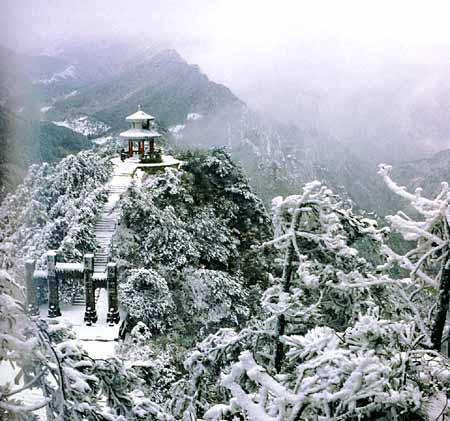
 |
| Lushan National Park (CNTV) |
Mount Lushan has unique glacial remains from the Quaternary Period and is the birthplace of the Quaternary Glacial Theory in China. It retains peculiar eolian dunes generated by ancient monsoon circumfluence in the last glacial period. The region has a complicated geological structure. Mount Lushan was formed from an ascending fault block mountain in the Quaternary Period and has many faults, especially on its southeast and northwest sides where the many faults trend from northeast to northwest. The north side of the mountain is characterized by contorted structures, forming a series of beautiful ridges and valleys, while the south and northwest sides have many fault scarps, forming magnificent and steep landforms including the Wulao Peak, Xiufeng Peak and the Shimen Gully. Broad valleys and gorges are distributed on the mountain and the terraces and valley steps are distributed outside. Ancient ground existed on the mountain and at its foot. The transition zone between Mount Lushan and the Yangtze River as well as the formation and extension of Poyang Lake has formed a series of unique landscapes. The landscape evolution of the Yangtze River in Jiujiang City and the Poyang Lake plain formed multiple landscapes, and has very high geological science value and tourism value.
Mount Lushan's sceneries are famous for being peculiar, beautiful, precipitous and magnificent, and they enjoy fame as "the most beautiful mountain under heaven." So many peculiar peaks, stones, valleys, waterfalls and caves have formed magnificent mountain landscapes. Mount Lushan has a total of 12 tourist attractions, 37 scenic spots and 230 sceneries, including Wulao Peak, Sandie Fountain, Hanpo Pass, Lulin Lake, Huajing, Ruqin Lake, Jinxiu Valley and the Fairy Cave.


















 Teenage crash victims were talented students
Teenage crash victims were talented students


![]()
